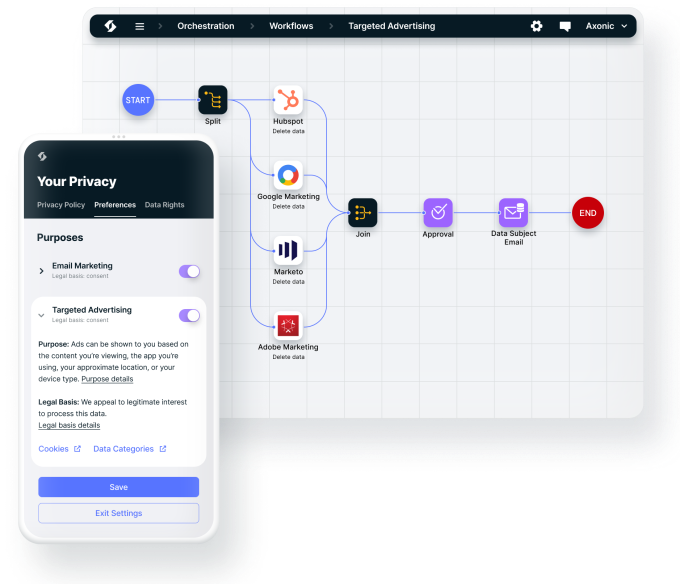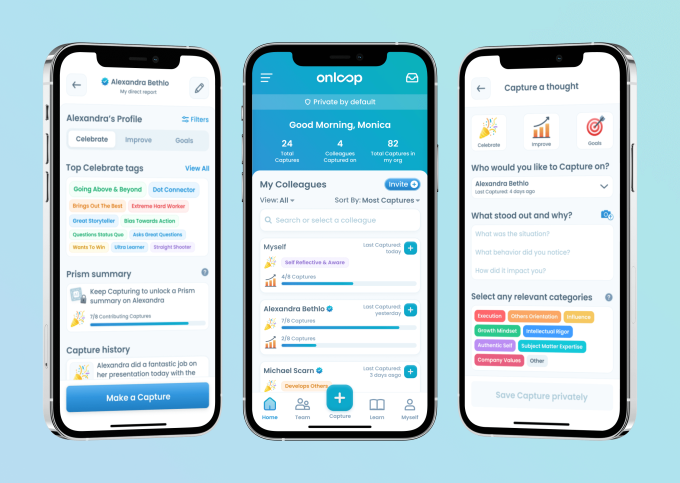LinkedIn normalized the idea of making people’s resume’s visible to anyone who wanted to look at them, and today a startup that’s hoping to do the same for companies and how they are organized and run is announcing some funding. The Org, which wants to build a global, publicly viewable database of company organizational charts — and then utilize that database as a platform to power a host of other services — has raised $20 million, money that it will be using to hire more people, add on more org charts and launch new features, with a recruitment toolkit being first on the list.
The Series B is led by Tiger Global, with previous backers Sequoia, Founders Fund and Balderton Capital also participating alongside new investors Thursday Ventures, Lars Fjeldsoe-Nielsen (a former Balderton partner), Neeraj Arora (formative early WhatsApp exec), investor Gavin Baker, and more. From what we understand, the investment values The Org at $100 million.
Founders Fund led the company’s last round, a Series A in February 2020, and the whole world of work has really changed a lot in the interim because of COVID-19: companies have become more distributed (a result of offices shutting down); the make-up of businesses has changed because of new demands; and many of us have had our sense of connection to our jobs tested in ways that we never thought it would.
All of that has had a massive impact on The Org, and has played into its theory of why org charts are useful, and most useful as a tool for transparency.
“In many ways the pandemic has forced us to reevaluate the norms of how work happens. One of the misconceptions was the idea that you are only working when you are at the office, 9-5. But the future of work is a hybrid set up but you get a lot of issues that arise out of that, communication being one of them. Now it’s much more important to create alignment, a sense of connection, and really feeling a sense of belonging in your company,” Christian Wylonis, the CEO who co-founded the company with Andreas Jarbøl, said in an interview (the two are pictured below). “We think that a lot of these issues are rooted around transparency and that is what The Org is about. Who is doing what, and why?”

Image Credits: The Org
He said that when the coronavirus suddenly ramped up into a global issue — and it really was sudden; our conversation in February 2020 had nothing whatsoever to do with it, yet it was only weeks later that everything shut down — it wasn’t obvious that The Org would have a place in the so-called “new normal.”
“We were as nervous as anyone else, but the idea of what work would look like and how we enable people around that has gotten a lot higher on the agenda,” he said. “The appetite for new tools has improved dramatically, and we can see that in our traffic.”
The Org has indeed seen some very impressive growth. The company now hosts some 130,000 public org charts, sees 30,000 daily visitors and has more than 120,000 registered users. And more casual usage has boomed, too. Wylonis notes that The Org now has close to 1 million visitors each month versus just 100,000 in February 2020, when it only had 16,000 org charts on its platform.
Monetization is coming slowly for the startup. Building, editing and officially “claiming” a profile on the platform are all still free, but in the meantime The Org is working on its platform play and using the database that it is building to power other services. Job hunting is the first area that it will tackle.
Posting jobs will be free, and it’s integrating with Greenhouse to feed information into its system, but recruiters and HR pros are given an option to manage the sourcing and screening process through The Org, a kind of executive recruitment tool, which will come at a charge. Down the line there are plans for more communications and HR tools, Wylonis said. Some of this will be built by way of integrations and APIs with other services, and some tools — such as communications features — will be built in-house, from the ground up.
When I covered the company’s last round, I’d noted that there were some obvious hurdles for The Org, as well as potentially others like Charthop or Visier building business models on providing more transparency and information around hiring and how companies are run.
Sometimes the companies in question don’t actually want to have more transparency. And any database that is based around self-reporting runs the risk of being only as good as the data that is put into it — meaning it may be incomplete, or simply wrong, or just presented to the contributors’ best advantage, not that of the company itself. (This is one of the issues with LinkedIn, too: Even with people’s resumes being public, it’s still very easy to lie about what you actually do, or have done.)
So far, the theory is that some of this will be resolved by way of who The Org is targeting and how it is growing. Today the company’s “sweet spot” is early-stage startups with about 50-200 employees, and generally org charts are created for these businesses in part by The Org itself, and then largely by way of wiki-style user-edited content (anyone with a company email can get involved).
The plan is both to continue working with those smaller startups as they scale up, but also target bigger and bigger businesses. These, however, can be trickier to snag — not least because they will stretch into the realm of public companies, but also because their charts will be more complicated to map and manage consistently. For that reason, The Org is also adding in more features around how companies can “claim” their profiles, including managing permissions for who can edit profiles.
This might mean more managed public profiles, but the idea is that it will be a start, and once more companies post more information, we will see more transparency overall, not unlike how LinkedIn evolved, Wylonis said.
The LinkedIn analogy is interesting for another reason. It seems a no-brainer that LinkedIn, which is at its heart a massive database of information about the world of professional work, and the people and companies involved in it, would have wanted to build its own version of org charts at some point. And yet it hasn’t.
Some of this might be down to how LinkedIn has fundamentally built and organised its own database and knowledge graph, but Wylonis believes it might also be a conceptual difference.
“We think that this might be the fundamental difference between us and them,” Wylonis said of LinkedIn. “They are a database of resumes. ‘I can say whatever I want.’ But for us, the atomic unit is the organization itself. That is an important distinction because it’s a one to many relationship. It can’t be only me editing my profile. And allows us to build structures.”
He added that this was one of the reasons that Keith Rabois — who was an early exec at LinkedIn — became an early investor in The Org: “LinkedIn has been looking at this forever, but they haven’t been able to build it, and so that is how we caught his attention.”


![]()




